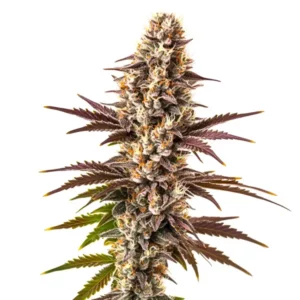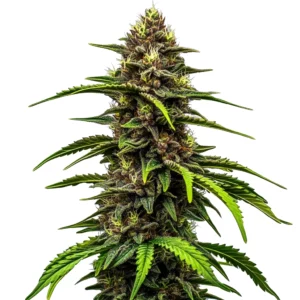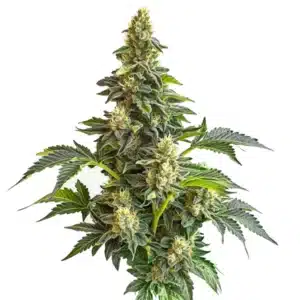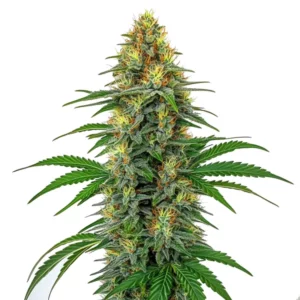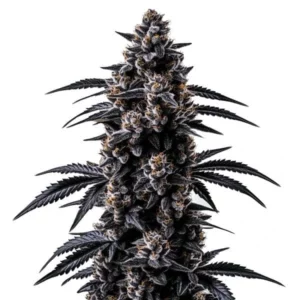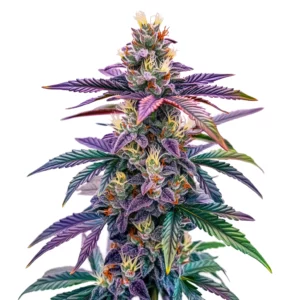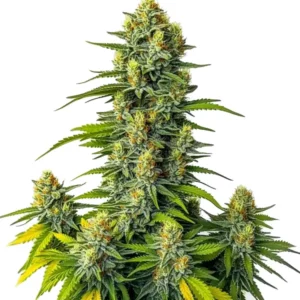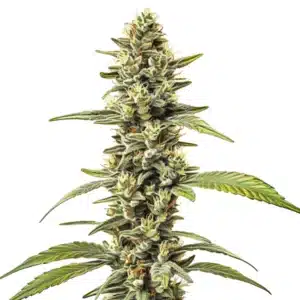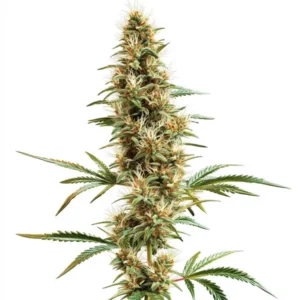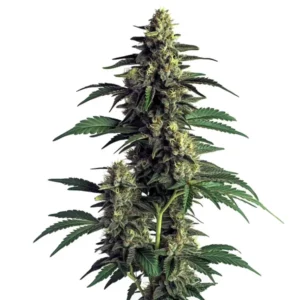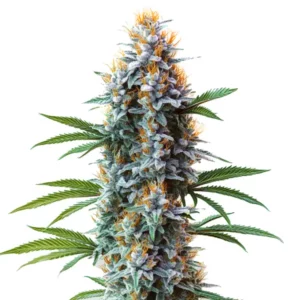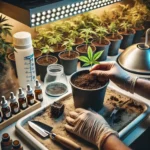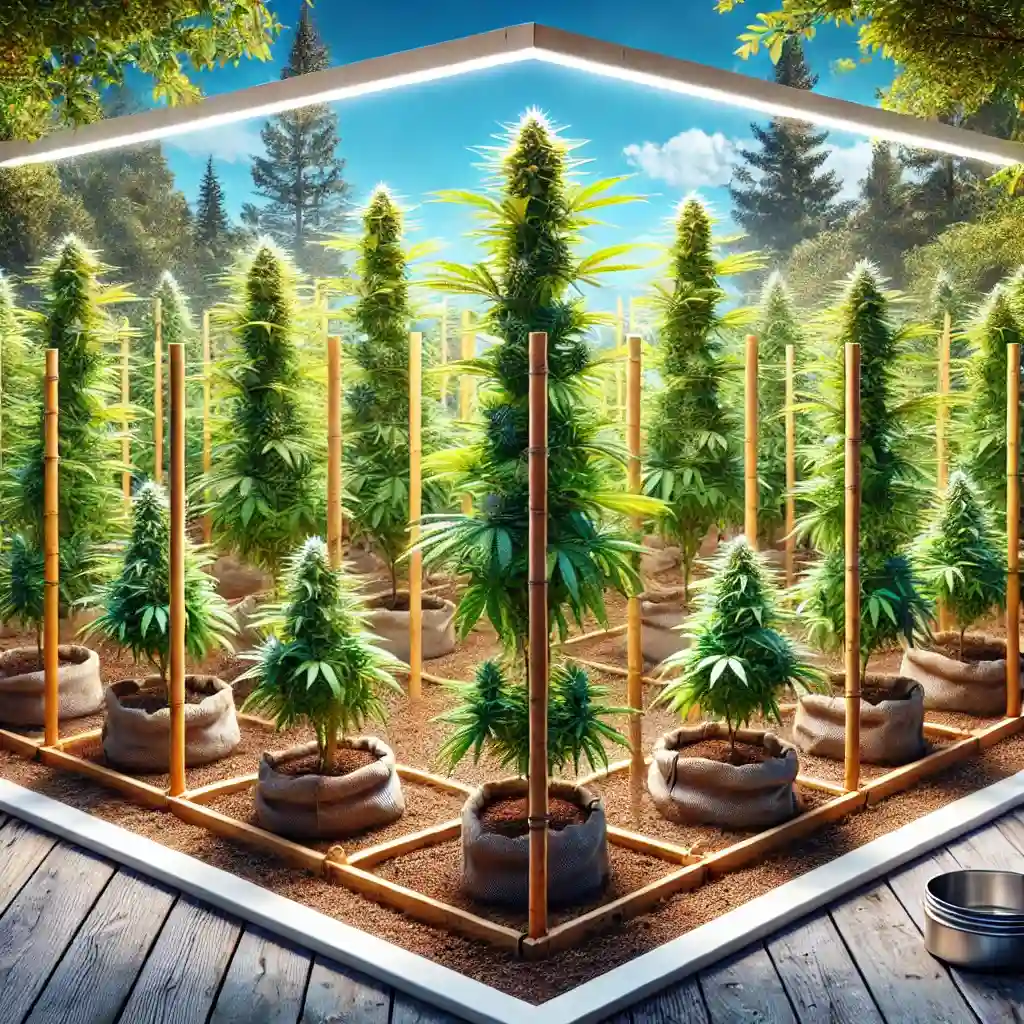
Growing a Clone Outdoors: How to Maximize Your Cannabis Harvest
Growing a clone outdoors offers cannabis cultivators the perfect blend of nature’s benefits and the reliability of clones. If you’re looking to increase yields while reducing the guesswork that comes with growing from seed, growing a clone outdoors could be your best option. Outdoor environments provide more space, natural sunlight, and consistent airflow, which can lead to robust plant growth and higher yields compared to indoor cultivation.
Clones are genetically identical to their mother plants, meaning they inherit the same traits, including potency, resilience, and growth patterns. When you take these high-quality clones and expose them to optimal outdoor conditions, you unlock their full potential, leading to bigger buds and a more efficient growing process.
Recommended Strains
Melonade
|
|
THC | 20% - 25% (Medium) |
|
|
Type | Feminized |
|
|
Yield | High |
|
|
Phenotype | 40% Indica / 60% Sativa |
Watermelon Autoflower
|
|
THC | 22% - 25% (Medium) |
|
|
Type | Autoflowering |
|
|
Yield | High |
|
|
Phenotype | 80% Indica / 20% Sativa |
The Benefits of Outdoor Growing for Cannabis Clones
One of the most significant benefits of growing a clone outdoors is the ability to harness the power of natural light. Unlike indoor grows, where artificial lighting limits coverage and energy efficiency, the sun provides consistent, full-spectrum light that boosts photosynthesis. This allows your clones to grow faster and stronger, creating dense buds packed with cannabinoids.
Another key advantage of outdoor cultivation is the space. Outdoors, your clones can spread their roots and branches without restriction, allowing for larger plants and bigger yields. The natural airflow outdoors also helps reduce humidity levels and prevent mold or mildew from forming on your plants. As a result, your clones remain healthy, and you avoid many of the common indoor growing problems that can slow down growth.
Maximizing Natural Light and Space for Larger Yields
The power of sunlight can’t be overstated when it comes to growing a clone outdoors. Sunlight provides all the necessary wavelengths that your clones need to thrive, helping them grow taller, fuller, and with better flower production. Position your clones in a location that receives at least six to eight hours of direct sunlight each day for the best results.
When growing outdoors, you also have the advantage of more space. This gives your clones the opportunity to stretch their branches, leading to larger plants. With more room to grow, clones can develop stronger stems and root systems, which directly impacts the size of your yield. To maximize your space, be sure to properly space out your clones, giving each plant plenty of room to grow without overcrowding.
Promos & Deals
How to Choose the Best Clones for Outdoor Cultivation
Selecting the right clones for your outdoor grow is a critical step in ensuring a successful harvest. Not all strains are suitable for outdoor cultivation, and choosing the wrong one can lead to disappointing results. When you grow a clone outdoors, the strain’s genetics will determine how well the plant adapts to your region’s climate and how robust the final yield will be.
When purchasing clones, focus on strains that are resilient and can handle the environmental factors specific to your location, such as temperature fluctuations, humidity, and local pests. Knowing which genetics work best outdoors can help you avoid issues and lead to a more productive growing season.
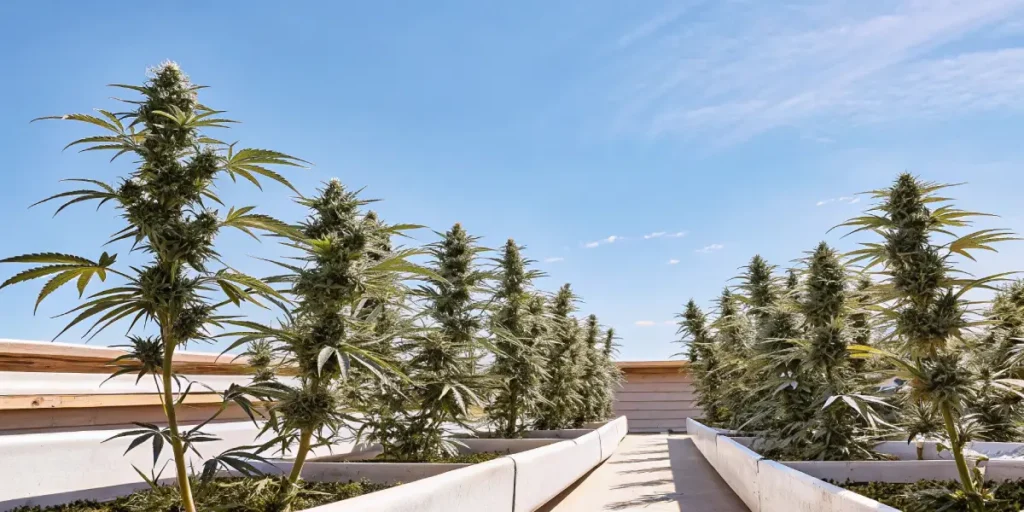
Selecting Strains Suited for Your Climate and Region
When growing a clone outdoors, your local climate plays a significant role in the plant’s success. Strains that thrive in warm, dry climates may not perform as well in cooler, wetter environments. For example, strains like OG Kush and Sour Diesel are known for their ability to handle higher humidity levels, making them great for regions with more rain. On the other hand, strains like Jack Herer and Blue Dream prefer warmer, sunnier environments.
Before purchasing your clones, research which strains are best suited for outdoor growth in your area. This ensures that your plants will thrive without needing constant intervention or adjustment. You can also ask local growers or dispensaries for advice on the most suitable clones for your region’s specific conditions.
Why Genetics Matter When Growing Clones Outdoors
The genetic profile of your clones determines much of the growing process, from how they respond to the environment to the size and quality of your harvest. When you grow a clone outdoors, the plant inherits all the characteristics of its mother, so choosing clones from a strong genetic line ensures consistent growth, resilience to pests, and predictable yields.
Clones taken from a healthy, high-producing mother plant are more likely to flourish in an outdoor environment, especially if the mother plant was also grown outdoors. Genetics influence everything from flowering time to THC and CBD content, so it’s essential to source your clones from reputable growers who prioritize high-quality genetics.
Preparing Your Outdoor Grow Space for Clones
To ensure a successful outdoor grow, you need to create the right environment for your clones to thrive. Growing a clone outdoors requires preparation, particularly when it comes to soil quality, nutrients, and pest protection. A well-prepared grow space helps your clones establish themselves quickly and grow into strong, productive plants.
The good news is that outdoor growing allows your clones to tap into natural resources like sunlight and fresh air, but without the proper preparation, these elements alone won’t guarantee success. The following sections will guide you through setting up your grow space to maximize your clones’ potential.
Soil Preparation and Nutrient Management for Optimal Growth
Healthy soil is the foundation of any successful grow. When growing a clone outdoors, you need to ensure that your soil is rich in nutrients and well-draining to prevent waterlogged roots. Start by testing the soil’s pH and nutrient levels. Cannabis prefers slightly acidic soil with a pH between 6.0 and 7.0. Amend the soil with organic matter like compost, manure, or worm castings to provide the nutrients your clones need.
Nutrient management is also key to boosting your clone’s growth. During the vegetative stage, use a fertilizer high in nitrogen to promote leaf and stem growth. As the plant transitions into the flowering stage, switch to a phosphorus-rich fertilizer to support bud development. Consistent nutrient management throughout the growing cycle will lead to healthier plants and larger harvests.
Protecting Your Clones from Pests and Weather Conditions
One of the biggest challenges when growing a clone outdoors is dealing with pests and unpredictable weather conditions. To protect your plants, it’s essential to implement preventive measures early on. Use natural pest repellents like neem oil or introduce beneficial insects like ladybugs to keep harmful pests at bay.
Weather conditions can also impact your outdoor grow. Heavy rain or strong winds can damage your clones if they’re not adequately protected. Set up windbreaks or cover your plants with a canopy to shield them from extreme weather while still allowing them to receive plenty of sunlight. Additionally, monitor the local forecast and be prepared to take action if severe weather is expected.
Caring for Your Cannabis Clones Throughout the Growing Cycle
Once your clones are established in their outdoor environment, proper care is essential to ensure a successful growing season. Growing a clone outdoors requires attention to detail at each stage of the plant’s life cycle, from vegetative growth to flowering. Ensuring that your clones receive the right amount of water, nutrients, and training will set the foundation for a healthy, high-yielding crop.
Outdoor growing presents unique challenges, such as fluctuations in weather and pests, so it’s important to stay proactive and adjust your care routine as needed. By providing the right balance of attention and intervention, you can help your cannabis clones reach their full potential.
Watering and Feeding Outdoor Clones for Maximum Health
One of the key factors in growing a clone outdoors successfully is mastering the art of watering and feeding. Outdoor clones require consistent hydration, but it’s crucial not to overwater. Overwatering can lead to root rot or stunt your plant’s growth, while underwatering can cause stress and reduce yield. To avoid these problems, make sure your soil is well-draining, and water only when the top inch of soil feels dry to the touch.
As your clones progress through the vegetative stage, they will require more nutrients to support leaf and stem growth. A nitrogen-heavy fertilizer will help fuel this growth. During the flowering stage, shift to a bloom fertilizer rich in phosphorus and potassium to encourage bigger, denser buds. Monitor your plants closely for signs of nutrient deficiencies, such as yellowing leaves, and adjust your feeding schedule accordingly.
In addition to nutrients, outdoor clones benefit from occasional organic supplements such as compost teas or fish emulsion. These can help improve soil health and give your plants an extra boost. Keeping your clones well-fed throughout the growing cycle is key to producing high-quality, resinous buds.
How to Train and Prune Clones for Better Results Outdoors
Training and pruning are essential techniques when growing a clone outdoors. Properly trained plants receive more light exposure, increase airflow, and produce higher yields. One of the most effective training methods is topping, which involves cutting the top of the plant to encourage lateral growth. This creates multiple colas and results in a bushier, more productive plant.
Low-stress training (LST) is another technique where you gently bend and tie down branches to allow light to penetrate deeper into the plant. This method helps clones grow more evenly and increases bud production in areas that would otherwise remain shaded. Regularly inspect your clones and use these techniques throughout the growing cycle to optimize their growth.
Pruning is also vital when growing cannabis outdoors. Remove any yellow or damaged leaves to direct the plant’s energy toward bud production. Thinning out the lower branches will also improve airflow, reducing the risk of mold or pests. By keeping your plant clean and well-maintained, you’ll set the stage for a successful harvest.
Harvesting Outdoor Cannabis Clones for Optimal Potency
The moment you’ve been working toward is finally here, harvest time. Growing a clone outdoors comes with its own unique set of harvesting considerations. Harvesting at the right time and using the correct techniques will ensure that your buds reach their full potency and flavor potential. This is when all your hard work pays off, so it’s essential to handle the process with care.
Timing your harvest properly is crucial to getting the best quality buds. The maturity of the trichomes (the resin glands on your buds) determines when your cannabis is ready for harvest. Pay close attention to these trichomes to decide when to begin cutting down your plants.

When and How to Harvest Clones Grown Outdoors
To determine when to harvest your outdoor cannabis clones, you’ll need to examine the trichomes on your buds. As your plants mature, the trichomes change color from clear to milky white, and finally to amber. For most strains, harvesting when the trichomes are mostly milky with a few amber ones will result in a well-balanced high. However, if you prefer more sedative effects, wait until more trichomes have turned amber.
Once you’ve determined that your plants are ready, it’s time to start harvesting. Use clean, sharp scissors to cut the branches, making sure to leave some length for hanging. Be gentle with the buds to avoid damaging the trichomes, as they contain most of the plant’s cannabinoids and terpenes. After cutting, hang the branches upside down in a cool, dark, and well-ventilated space to dry.
Drying and Curing Your Outdoor Cannabis for Best Results
Drying and curing are the final steps in the growing process, but they are just as important as the earlier stages. Properly dried and cured cannabis results in better flavor, smoother smoke, and higher potency. After you’ve harvested your outdoor clones, hang them in a space with temperatures between 60°F and 70°F and humidity levels around 50-60%. This ensures a slow, even drying process that preserves the terpenes and cannabinoids.
It usually takes 7-10 days for the buds to dry completely, but you’ll know they’re ready when the stems snap rather than bend. Once dried, it’s time to cure the buds. Place them in glass jars, filling each jar about two-thirds full to allow airflow. Store the jars in a dark, cool place and open them once a day for the first week to release any excess moisture.
The curing process should last at least two weeks, but the longer you cure, the better the results. Curing your cannabis for four to six weeks will produce smoother smoke and more flavorful buds. With patience and proper care, you’ll enjoy top-quality cannabis that’s well worth the wait.
Maximizing the Yield and Quality of Your Outdoor Cannabis Clones
Maximizing the yield and quality of your cannabis clones when growing a clone outdoors requires more than just the basics of plant care. It involves strategies to optimize every part of the growing process, from seedling to harvest. By following proven techniques and staying attentive to your plants, you can greatly increase both the quantity and potency of your final product. Outdoor growing provides unique opportunities for large yields, but you need to be proactive about every step.
Clones offer the advantage of genetic consistency, which means you know exactly how your plants will perform and how to adjust your growing methods accordingly. Whether you’re growing for personal use or larger-scale production, the following strategies will help you get the most out of your outdoor cannabis clones.
Controlling Light and Temperature for Outdoor Clones
Although outdoor growing takes advantage of natural sunlight, it’s important to recognize that not all outdoor environments are created equal. Depending on your location, the amount of sunlight and the temperature can vary significantly, and both factors have a big impact on the success of your grow. Ensuring your cannabis clones get the right amount of light and maintaining proper temperatures throughout the growing season is essential.
Aim to position your clones in a spot where they will receive at least six to eight hours of direct sunlight each day. If you live in a region with intense heat, consider providing partial shade during the hottest parts of the day to prevent heat stress. On the other hand, in cooler climates, make sure your clones are positioned to get the most sunlight possible to encourage vigorous growth. You can also use reflective materials around your plants to bounce additional light onto the lower branches.
When it comes to temperature, cannabis thrives in daytime temperatures between 70°F and 85°F. If you live in a climate with cooler nights, consider using protective coverings during the evening to keep the plants warm and prevent cold stress. Consistent temperature control helps your clones grow faster and produce higher-quality buds.
Supporting Your Outdoor Clones for Maximum Growth
Cannabis clones grown outdoors often become large, heavy plants with dense buds, which means they may require extra support to prevent the branches from breaking under the weight. This is particularly important if your growing area is exposed to wind or rain. As your clones grow taller and the buds start to form, setting up a support system will help them stay upright and healthy.
One of the easiest ways to support your clones is by using stakes. Bamboo stakes are a popular option; they’re inexpensive, durable, and easy to install. Simply drive the stakes into the ground near each plant and tie the main stem and larger branches to the stake using soft plant ties. As the plant grows, adjust the ties to provide support for the new growth.
Alternatively, you can use trellises or cages to support the entire plant structure. Trellises are especially useful for training your clones to grow horizontally, maximizing light exposure and airflow. This technique also encourages more even bud development, leading to higher yields and better-quality cannabis.
Pest and Disease Management for Outdoor Cannabis Clones
Growing a clone outdoors has many advantages, but one of the main challenges is keeping your plants safe from pests and diseases. Outdoor environments expose your clones to a variety of threats, from insects to fungi, which can quickly damage your plants if not managed properly. Luckily, with the right preventive measures and monitoring practices, you can minimize the risk of pests and diseases and keep your clones healthy throughout the growing season.
The key to pest and disease management is to stay proactive. By setting up defenses early and regularly inspecting your plants, you can catch potential problems before they become major issues.
Preventing and Managing Pests
Outdoor cannabis clones are susceptible to a wide range of pests, including aphids, spider mites, caterpillars, and whiteflies. These insects can damage your plants by feeding on their leaves, stems, and buds, leading to stunted growth and reduced yields. To prevent pest infestations, it’s important to start with clean clones and maintain a tidy grow space.
Introducing beneficial insects, such as ladybugs and predatory mites, is one of the most effective natural pest control methods. These insects feed on harmful pests and help keep their populations in check without the need for chemical pesticides. You can also use organic pest deterrents, such as neem oil or insecticidal soap, to protect your plants.
Regularly inspect your clones for signs of pests, such as discolored leaves, tiny holes, or webbing. If you notice any infestations, act quickly to remove the affected areas and treat the plants with a pest control solution. The earlier you catch a pest problem, the easier it is to manage and prevent further damage.
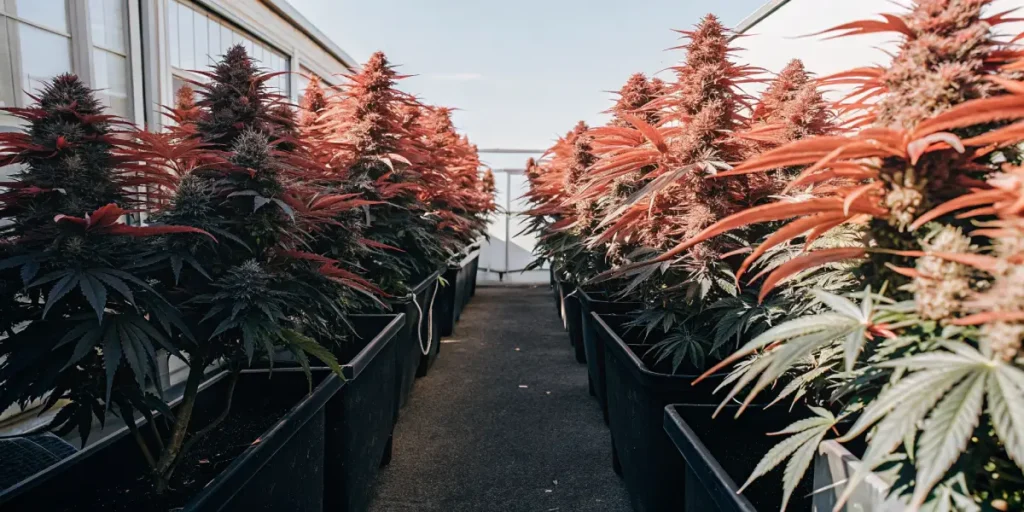
Protecting Your Clones from Mold and Mildew
Mold and mildew are common issues when growing cannabis outdoors, especially in humid climates or during rainy seasons. Powdery mildew, bud rot, and gray mold can all ruin your crop if left unchecked. To prevent these problems, it’s crucial to create an environment where mold and mildew are less likely to thrive.
Start by ensuring proper airflow around your plants. Space your clones far enough apart to allow for good ventilation and consider using a trellis or stakes to keep the branches from becoming overcrowded. Pruning lower leaves and branches also helps reduce moisture buildup around the base of the plant.
During wet weather, covering your plants with a canopy or using row covers can help keep them dry. You should also avoid watering your clones late in the day, as wet foliage overnight increases the likelihood of mold growth. If you notice any signs of mold or mildew, such as white powdery spots or brown, rotting buds, remove the affected areas immediately to prevent the problem from spreading.
FAQs
What are the benefits of growing a cannabis clone outdoors?
Growing a cannabis clone outdoors offers several advantages, including access to natural sunlight, abundant space for root and branch expansion, and improved airflow. These factors contribute to larger plants, higher yields, and stronger buds compared to indoor growing. Clones also ensure genetic consistency, making it easier to predict growth patterns and potency.
How do you choose the best clones for outdoor cultivation?
When selecting clones for outdoor cultivation, it’s important to choose strains that match your local climate. Look for resilient strains with genetics suited to your region’s temperature, humidity, and pest conditions. Selecting the right clones will ensure better adaptation to outdoor environments, reduce potential growing issues, and increase your chances of a successful harvest.
How can you protect outdoor cannabis clones from pests and weather?
To protect outdoor cannabis clones, use natural pest deterrents like neem oil or beneficial insects such as ladybugs. Install windbreaks or canopies to shield plants from strong winds and heavy rain. Additionally, maintain proper spacing and airflow to prevent mold and mildew. Regular inspections help catch issues early and keep your clones healthy throughout the season.


